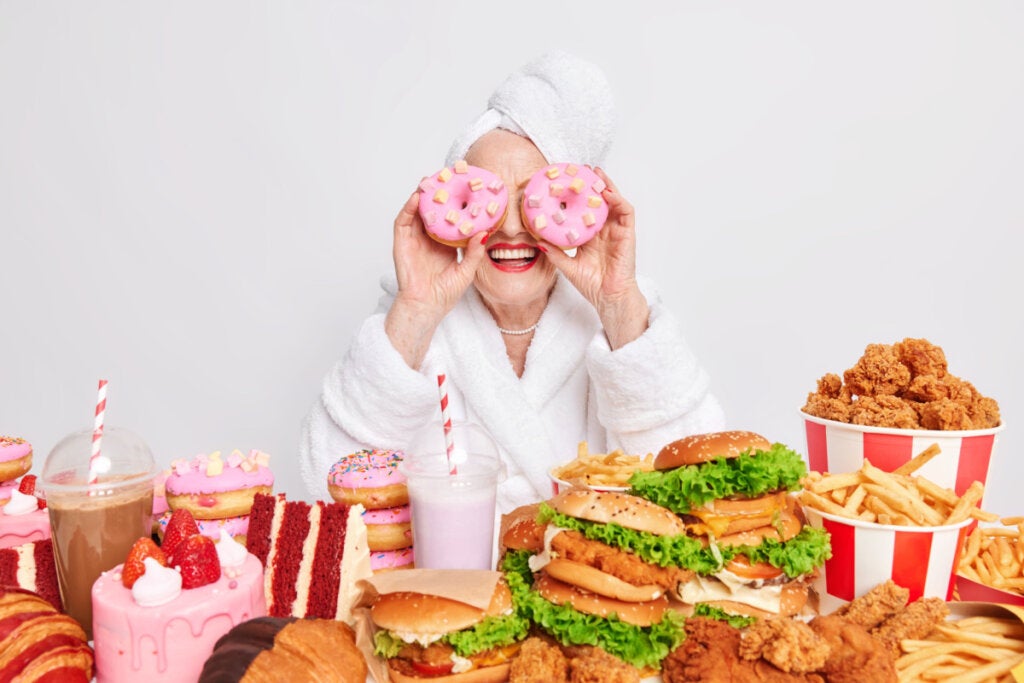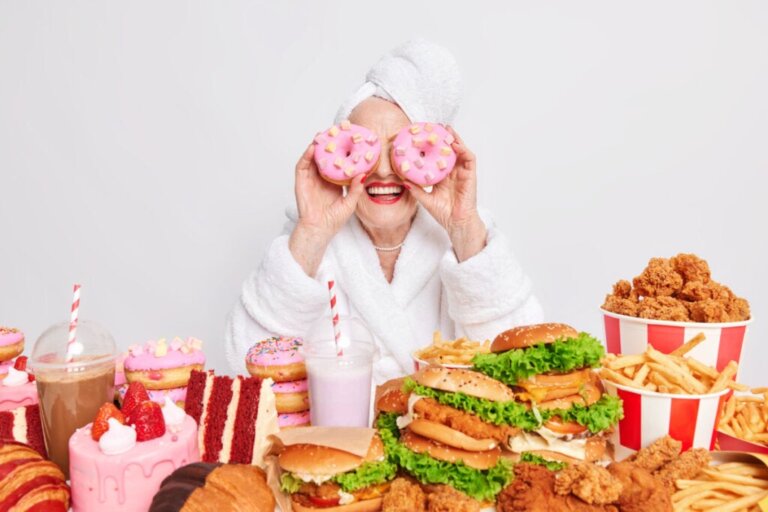The nutritional quality of the food that populates the supermarket shelves is questionable. The most harmful ones often occupy the central shelves, while those that are not, we can find them at the bottom.
The obesogenic environment is understood as what generates obesity. In other words, it is that context that favors the chances of the population gaining weight and suffering from chronic diseases. That is to say, any environment in which a sedentary lifestyle is favored over physical activity, overeating which regulates the sensations of hunger and satiety and a fatal diet compared to a healthy diet.
Boyd Swinburn was the person who gave meaning to the context. The obesogenic environment is mainly found in shops and supermarkets where most of the population buys. Offers and discounts are often on standard products, while premium products are an increasingly popular commodity.
Unsurprisingly, on any given day we see a low-quality “something like food” menu that offers the same price as a single vegetable. But let’s not delude ourselves: an obesogenic environment has the same impact on the diet of thin or normal weight people. Some people with a healthy, balanced diet have a higher body mass index (BMI) than others who follow an unhealthy or unhealthy diet.
The aisles of these supermarkets, as Julio Basulto states in his book Eat Shit, generate food deserts, food swamps or food ambushes that culminate in the obesogenic and pathogenic environment.
Nutritionists and psychologists on alert: the obesogenic and pathogenic environment
Around us, the proportion of healthy food takes up little space. The size of the portions they offer us grows parallel to our abdominal perimeter.
The current scenario is made up of excess pastries in all their shapes and colors, ultra-sugary sweets, candies and chips. And all of this is associated with lights, colors and luminosity that obscure public health and cause young people to normalize the foods that should be residues in food.
And with this obesogenic environment: what about mental health?
With this high calorie supply that disrupts the sense of nutrition, fun and pleasure, the tricky thing is to eat right. And not only. All this physical overeating also leads to emotional overweight which occurs in a number of eating disorders, such as the following:
The snack
Spitting is a fairly frequent practice. For example, when at the end of the day we are sitting in front of the television and one of them comes to mind snack with an interesting flavor or when we are with our partner watching an entertainment program, the commercial comes with ads produced by the multinationals we invent the latest imitation flavors they have created and go for a bag of chips flavored with cheese, barbecue or caviar.
It also happens when something makes us feel bad and incomplete and we realize that our life is sad, devoid of emotions and “sense pleasure”. Right there we go to have a snack and instantly savor what they sold us as “good living, good eating”, while we say to ourselves over and over again: “for once nothing happens”.
Also, our friends tell us that we are becoming obsessed with health, to relax. This is how we fall into the peck, the easy trap. Saying no to a certain diet is like saying no to drugs in an environment where everyone consumes.
Anxiety and the obesogenic environment
Craving is an overwhelming feeling of hunger, but linked only to specific foods that we enjoy, which ends once hunger has subsided. You don’t live with a sense of guilt, contrary to what happens, for example, with the bulimic crisis.
The craving for sweets is the most frequent and mainly affects young women. Accompanied by malaise, dizziness and fatigue, anxiety corresponds to a drop in blood sugar, that is, in the blood sugar index, usually caused by an excessively restrictive diet. But there have also been anxiety states without a true drop in blood sugar.
Responding to cravings by devouring cakes or sausages at full speed is like taking a “dose” of sugar or serotonin, the neurotransmitter in the brain which increases after massively ingesting sugary substances and which causes “well-being” in the very short term.
The chocolate mania
Chocolate has many followers. The problem is the chocolate they sell to us and not the cocoa. However, 90% of their followers are happier the more milk, sugar, or cookies they contain. Also, chocolate can be associated with childhood memories.
Its fats and sugars increase the release of serotonin. In addition, chocolate increases the levels of endorphins, the morphine that our brain naturally produces with certain activities, such as sports. Additionally, chocolate contains amandamine, a type of endocannabinoid that has relaxing effects on our nervous system.
Night feeding syndrome
Getting up in the middle of the night to eat a significant amount of food is the main sign of this syndrome. This uncontrolled eating is usually motivated by anxiety.
Night feeding syndrome can have serious health consequences. Sufferers usually postpone their first meal of the day for several hours and consume few calories throughout the day.
Hyperphagia
This eating behavior is characterized by a regular excess, both in the amount of food on the plate and in the way it is brought to the mouth (large spoonfuls, very short bites and short chewing). It could be a familiar trait.
Sometimes hyperphagia becomes pathological in appearance, resulting in a new terminology: bulimic hyperphagia. In it, meals go far beyond society. The person cannot stop eating. However, it has neither the paralyzing nature nor the typical programming of the bulimic crisis.
The worst way to combat the obesogenic environment
The more the stigma and responsibility will fall on the behavior of obese people, the less it will fall on those companies that alter our reward circuit with products of very low nutritional quality. Many of the famous people who advertise these products will never consume what they promote; For them it’s just work.
What must we do to stop this? For example, we can hear scientists with no commercial interests in the food industry or multinationals who have to lie about their products in order to sell. Depending on what we choose, the population will have good health or damaged health as they age. The choice is ours!
You might be interested in …

